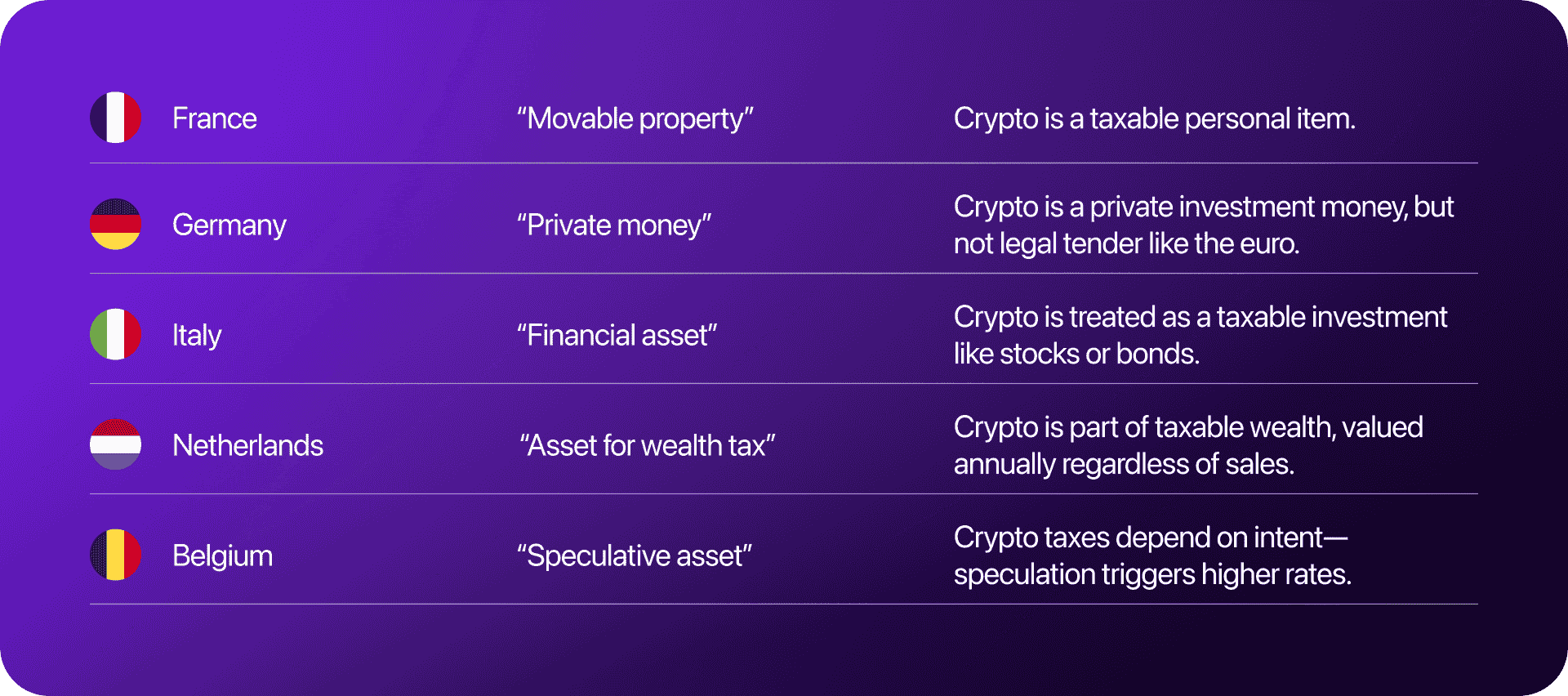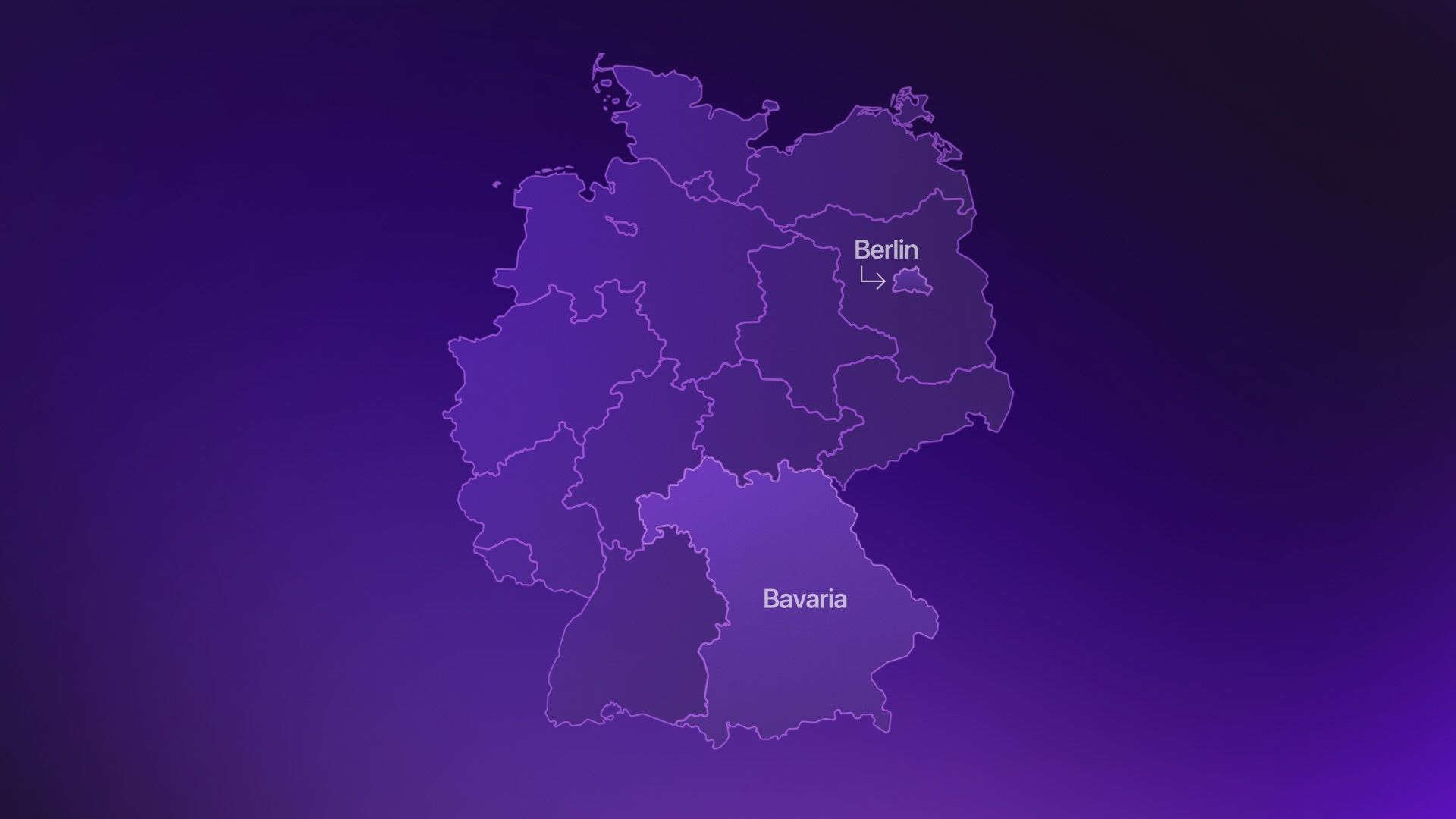Crypto taxation in the European Union is a complex topic, mainly because there are so many rules that are constantly changing.
Here’s the Who, What, Where, Why, and When of EU crypto taxes.
Sign up to our weekly MoonPay Minute newsletter
WHO: The EU + individual member states
The EU doesn’t have unified tax rules for crypto. Instead, it simply sets the stage through directives like “the DAC” (Directive on Administrative Cooperation), which is designed to enhance tax transparency and coordination across states.
DAC8 - the eighth version of the directive - specifically addresses crypto, e.g. by requiring crypto companies to share user data like tax ID numbers. |
While directives like DAC8 help EU countries coordinate, tax policy is ultimately set at the state level. There are 27 EU member states, each with different tax rules.
WHAT: What’s in a name?
As we explained in our MoonPay Minute on crypto taxation in the U.S., tax rules hinge on definitions. How crypto is taxed depends on what crypto is.
Here’s how tax agencies in some EU countries classify crypto:

WHERE: Europe’s tax tangle
Each of the EU’s 27 member states have their own tax rules that are constantly in flux. Here’s how the three biggest countries differ:
Germany Tax-free if crypto is sold after a year-long hold. | France Tax-free if crypto gains are below €305 per year | Italy Tax-free if gains are reinvested into approved financial products. |
Interesting fact
Italy planned to hike their rate to 42% but backed down after immediate backlash.
Zooming in: Germany

There could even be tax differences within some member states. Germany has one set of rules for the whole country but enforcement rigor varies between its 16 partly-sovereign states. Tax authorities in Bavaria, for example, may be less forgiving than their counterparts in Berlin. In other words, someone’s tax bill could depend on their postal code.
WHY: Why no unified framework?
Despite DAC8 and the Markets in Crypto Assets Regulation (MiCA) - Europe’s comprehensive regulatory licensing framework for crypto - critics argue that leaving tax rates and classifications to individual member states creates a messy patchwork that undermines cross-border consistency. High rates in some member states could also push talent and capital out of Europe.
Ultimately the issue is about how the EU approaches taxation generally, not just crypto taxes. The trading bloc has made it clear that direct taxation is the sole responsibility of member states:
Direct taxation | Indirect taxation |
Taxes paid directly to the government based on income or wealth. | Taxes paid when you buy goods or services. |
Who pays: You, directly | Who pays: You, but through a purchase. |
Example: Income tax on crypto gains in Germany (0-45% if sold within a year). | Example: VAT on buying crypto mining gear in France (20%). |
WHEN: Watch this space
Mark your calendar for January 1, 2026, which is when DAC8 fully kicks in. By this date, EU member states must codify DAC8 rules into law, which includes:
- Requiring crypto firms to report user data to local tax authorities
- Setting up systems whereby this data can be shared with other member states
- Establishing penalties for non-compliance
Subscribe to our newsletter!
Did you like this article? Sign up to our weekly MoonPay Minute newsletter to get similar content delivered directly to your inbox.
